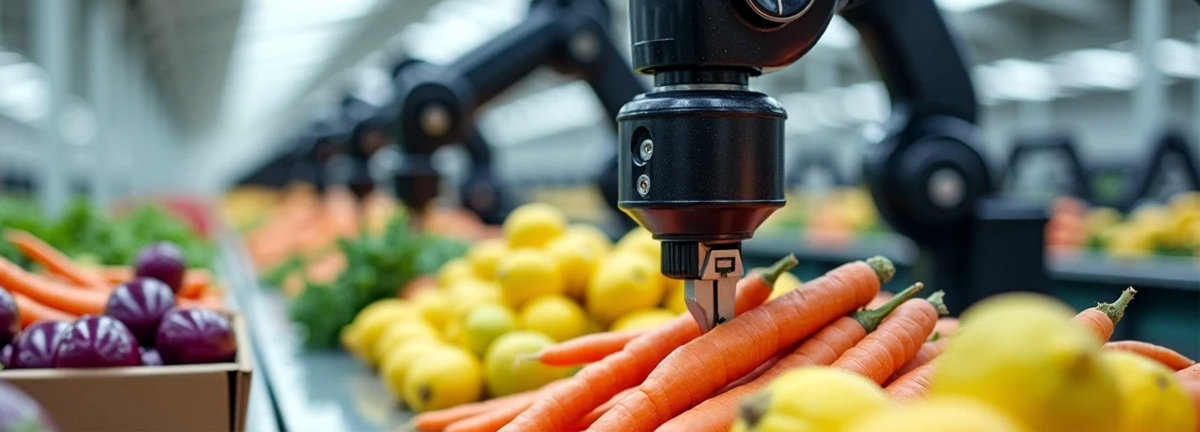Artificial Intelligence (AI) is more than just a ‘buzzword’ in the food industry. It’s increasingly being used to drive efficiency and innovation across various aspects of the sector, including food safety, compliance, supply chain management, and consumer experiences.
In terms of food safety, AI is enabling a proactive approach by predicting potential risks before they become issues. This is achieved through predictive analytics algorithms that analyze vast amounts of data from supply chains, production environments, and past recall patterns. Furthermore, AI-powered cameras and computer vision technology are enhancing food safety inspections, detecting contamination, improper labeling, and foreign objects faster and more accurately than human eyes.
AI also plays a crucial role in food safety compliance, with AI-driven sensors and diagnostic tools detecting harmful bacteria like E. coli and salmonella in real-time during food production. This reduces the risk of outbreaks and helps businesses ensure consumer safety.
In addition to food safety, AI significantly impacts food product development and nutritional labeling. Food companies leverage AI to develop new products faster by analyzing consumer preferences, ingredient interactions, and market trends. AI-driven tools also enhance nutritional labeling, ensuring labels are accurate, compliant, and tailored to meet consumer expectations.
Moreover, AI contributes to operational efficiency at retail or restaurant locations, allowing employees to focus on food safety and quality. Examples include AI-enabled drive-throughs and predictive maintenance for equipment like ice cream machines.
AI-powered regulatory assistants help food businesses stay ahead in the increasingly complex regulatory environment by automating compliance processes and simplifying regulatory requirements. These assistants interpret complex regulations, provide instant compliance-related answers, and automate regulatory workflows.
Here are 10 ways the industry is utilizing AI:
1. Optimize Operations with AI
- Inventory Management: Use AI-powered tools to predict demand, reduce waste, and automate restocking.
- Supply Chain Optimization: AI can analyze supplier performance, track deliveries, and forecast disruptions.
- Kitchen Automation: Implement AI-driven cooking assistants (e.g., robotic chefs, smart ovens) for consistency and speed.
2. Enhance Customer Experience
- Personalized Recommendations: AI can analyze customer preferences (past orders, dietary restrictions) to suggest menu items.
- Voice & Chatbot Ordering: Deploy AI chatbots (via apps, websites, or voice assistants) for seamless ordering.
- Dynamic Pricing & Promotions: AI can adjust prices based on demand, time of day, or customer behavior.
3. Improve Marketing & Sales
- Predictive Analytics: AI helps identify trends (popular dishes, peak hours) to refine marketing strategies.
- Social Media Insights: AI tools analyze customer sentiment and engagement to tailor promotions.
- Loyalty Programs: AI can personalize rewards based on individual buying habits.
4. Ensure Food Safety & Quality
- AI-Powered Monitoring: Use sensors and AI to track food temperature, storage conditions, and expiry dates.
- Quality Control: Computer vision can inspect food for consistency and defects before serving.
5. Streamline Staff Management
- AI Scheduling Tools: Optimize staff shifts based on predicted foot traffic.
- Training & Assistance: AI-driven training modules or AR tools can help staff learn new processes faster.
6. Leverage AI in Delivery Services
- Route Optimization: AI improves delivery routes for speed and fuel efficiency.
- Delivery Time Predictions: Machine learning provides accurate delivery ETAs to customers.
7. Adopt Smart Payment Systems
- Facial Recognition Payments: Speed up checkout with AI-powered payment verification.
- Fraud Detection: AI can detect unusual transactions and prevent payment fraud.
8. Stay Ahead with Competitive Insights
- AI Market Analysis: Monitor competitors’ pricing, menu changes, and customer reviews to stay competitive.
9. Start Small & Scale Up
- Pilot AI tools in one area (e.g., chatbot ordering) before full-scale implementation.
- Use cloud-based AI solutions to reduce upfront costs.
10. Ensure Data Privacy & Compliance
- Securely store customer data and comply with regulations (GDPR, CCPA).
- Be transparent about AI usage (e.g., if chatbots are automated).
Popular AI Tools for Food Businesses
- Chatbots: ManyChat, Dialogflow
- Inventory Management: Blue Yonder, Shelf Engine
- Customer Insights: Tastewise, Zenput
- Delivery Optimization: Routific, Locus

